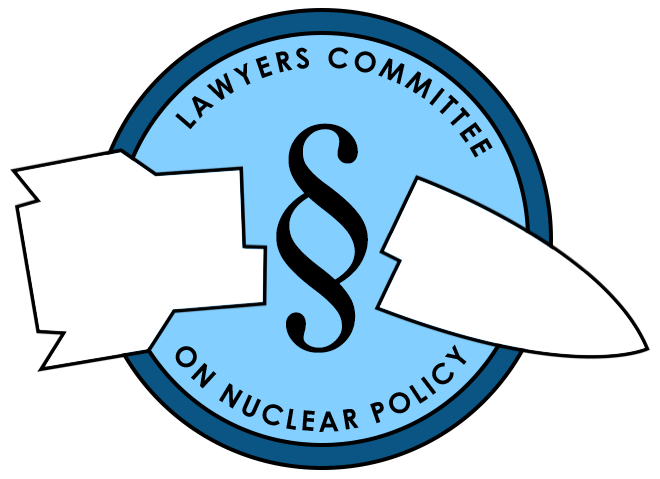Back to Curriculum | Download a PDF version of this module
Last updated February 2023
Objectives/Goals:
Students will use this module to develop a strong understanding of humanitarian disarmament—its meaning, development, connection to bodies of international law, and how it inspired a movement that culminated in the Treaty on the Prohibition of Nuclear Weapons (TPNW). This landmark treaty entered into force in January 2021, and its first meeting of states parties took place in Vienna, Austria in June 2022. Through these readings students will understand the benefits of supporting a fundamental shift in analytical discourse related to nuclear weapons and disarmament from a state security lens to a human security lens. Important focus areas in this module are: human security, humanitarian disarmament, international humanitarian law, and the TPNW.
Reading List:
International Human Rights Law and the Treaty on the Prohibition of Nuclear Weapons, Bonnie Docherty, Remarks from a Side Event on Human Rights, Democracy, and Nuclear Weapons at the NPT PrepCom (2019)
Vienna Declaration and Vienna Action Plan Overview, International Campaign to Abolish Nuclear Weapons (ICAN); and Vienna Declaration text (2022)
“Hope for Nuclear Abolition: The Humanitarian Perspective,” Disarmament Times, Ira Helfand and Andrew S. Kanter (2013)
Treaty on the Prohibition of Nuclear Weapons (TPNW): Signature and Ratification, including full text beginning p.9 (2017)
“Building Blocks for Nuclear Ban Treaty: NPT & Advisory Opinion of the International Court of Justice,” John Burroughs (2020)
“Nuclear Weapons and Compliance with International Humanitarian Law and the Nuclear Non-Proliferation Treaty,” Charles J. Moxley, Jr., John Burroughs, and Jonathan Granoff; Fordham International Law Journal (2011)
Legality of the Threat or Use of Nuclear Weapons, esp. paras. 74-87, International Court of Justice (1996)
Geneva Conventions and Protocols (1949 - 2005)
Pocket Guide: The Legal Gap, ICAN (2015)
Global Activism and Humanitarian Disarmament (Chapters 1 & 3), Matthew Breay Bolton, Sarah Njeri, and Taylor Benjamin-Britton (2019)
“A ‘light for all humanity’: the Treaty on the Prohibition of Nuclear Weapons and the progress of humanitarian disarmament,” Global Change, Peace & Security, Bonnie Docherty (2018)
Alternative Approaches in Multilateral Decision Making: Disarmament as Humanitarian Action, UNIDIR (2005)
Dissenting Opinion, Section III, Judge Christopher Weeramantry, International Court of Justice Advisory Opinion on The Legality of the Threat or Use of Nuclear Weapons (1996)
Discussion Questions/Analysis Prompts:
What connections do you see between the humanitarian consequences of nuclear weapons and sustainable development?
What impact will the TPNW have on humanitarian disarmament now that it has entered into force?
In what ways is a humanitarian analysis of the legality of nuclear weapons/disarmament complementary to a human rights law analysis, and in what ways is it distinct?
Is Judge Weeramantry’s dissenting opinion convincing? Why or why not?

